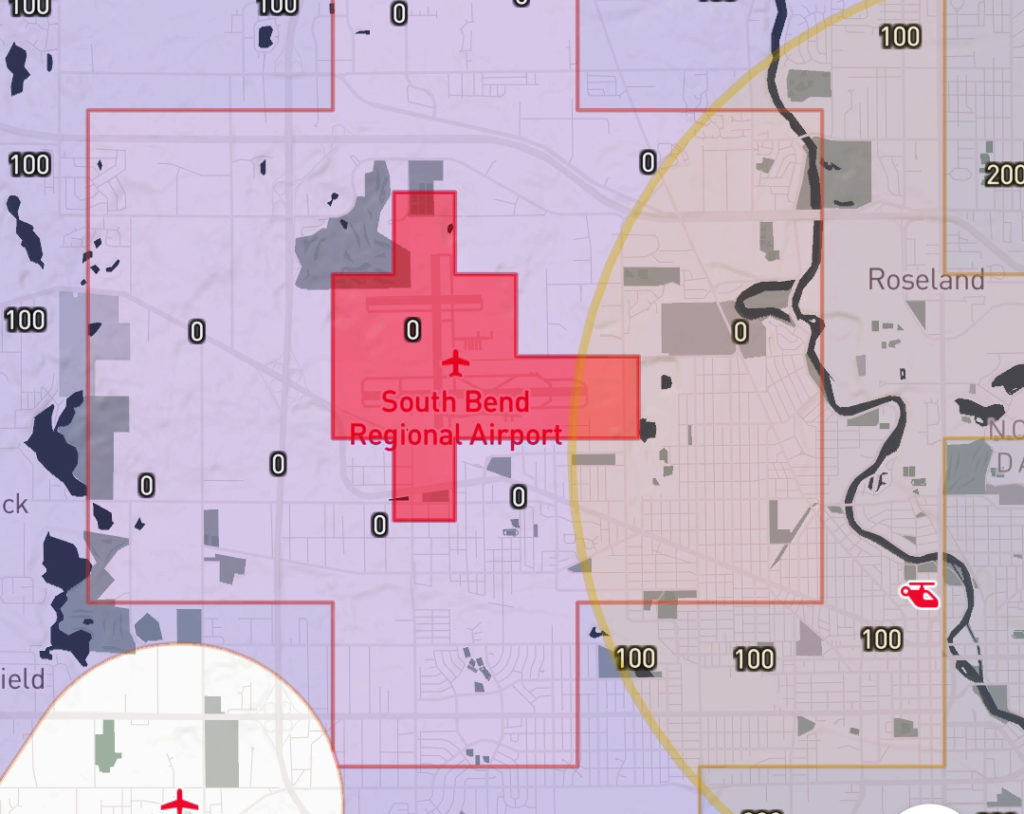
In the ever-increasing landscape of drone use, safety remains paramount for all drone operators. At Bender Drone Services, we recognize the importance of adhering to regulations and prioritizing aviation safety in all our operations. In this blog post, we delve into the essential guidelines for flying drones near airports, with a specific focus on our local airport, South Bend International Airport (SBN).
Controlled airspace is divided into various classes- Class B, C, D, and E airspace, each with distinct regulations governing drone operations. Class B airspace surrounds the Untied States’ largest airports, such as O’Hare International Airport (ORD) in Chicago. Regional or mid-sized airports fall under Class C airspace, which includes the South Bend International Airport. Smaller regional airports, such as Kalamazoo/Battle Creek International Airport (AZO) or Fort Wayne International Airport (FWA), are classified as Class D airspace.
Knowing the classification of each airport aids in understanding the laws and regulations for flying a drone near that airport. For the South Bend International, the airspace extends from the surface to a specified altitude around and above the airport. Within this airspace, communication with Air Traffic Control (ATC) is mandatory, and drone flights require prior authorization.
For any drone flight within five miles of South Bend International Airport, obtaining authorization is imperative. This ensures coordination with manned aircraft operations and helps prevent airspace conflicts. Additionally, drone pilots must adhere to altitude restrictions, with flights above 400 feet above ground level requiring authorization through the Low Altitude Authorization and Notification Capability (LAANC) system.
At Bender Drone Services, we are committed to upholding the highest standards of safety and professionalism in all our drone operations. By adhering to regulations and prioritizing aviation safety, we aim to provide our clients with reliable and responsible drone services while ensuring the safety of airspace users.
